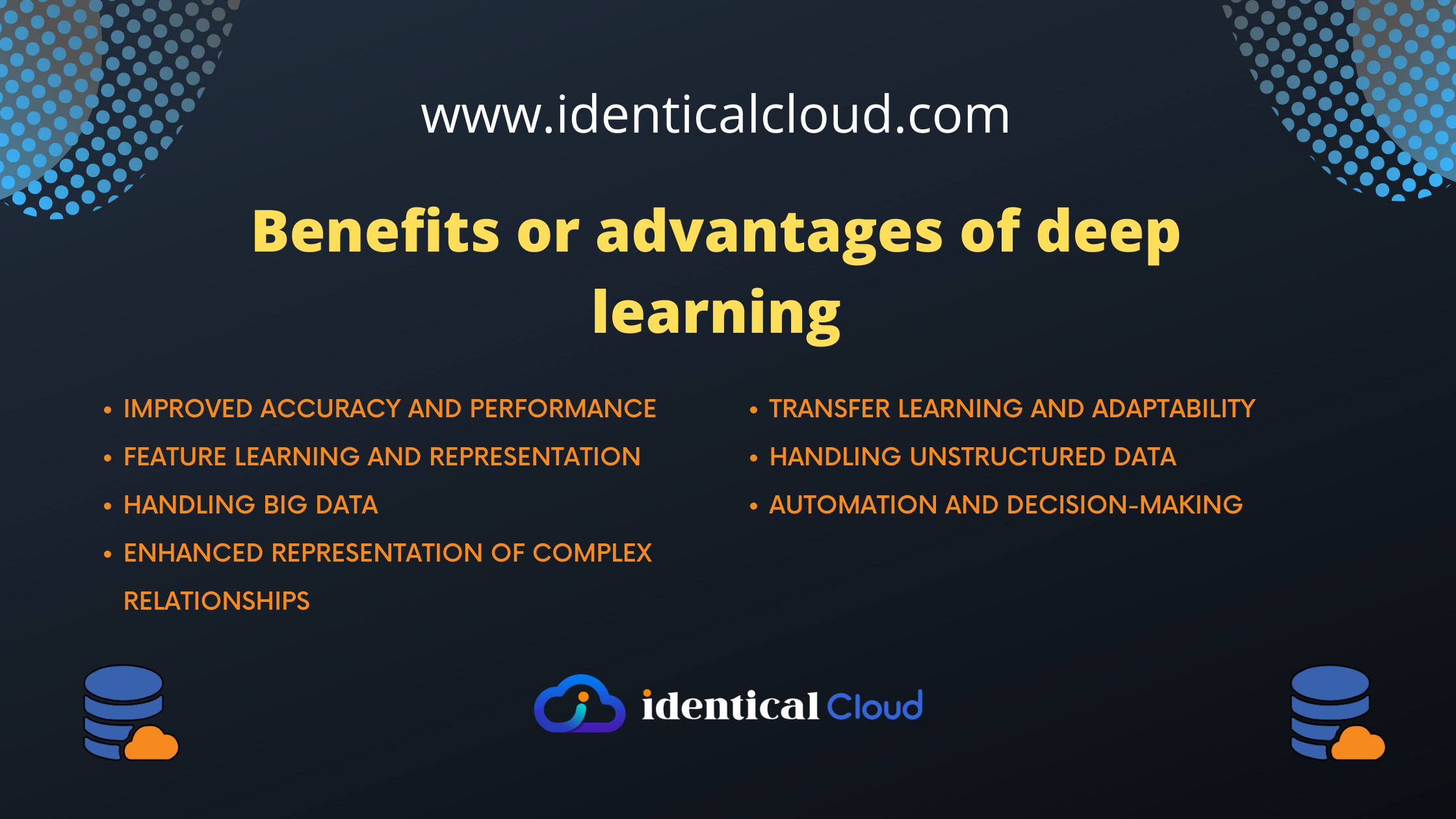
Benefits or advantages of deep learning
Benefits or advantages of deep learning
Deep learning, a subfield of machine learning, has gained significant attention in recent years due to its ability to process complex and high-dimensional data. With its advanced neural network architectures, deep learning has revolutionized various domains, from computer vision and natural language processing to healthcare and autonomous vehicles. In this blog post, we will explore the benefits and advantages of deep learning, highlighting its potential to drive innovation and solve complex problems.
Improved Accuracy and Performance
Deep learning models excel in tasks that require high accuracy and performance. With their deep neural network architectures, these models can automatically learn intricate patterns and features from raw data. This capability enables deep learning models to achieve superior performance in tasks such as image classification, object detection, speech recognition, and natural language understanding. Deep learning algorithms continually improve as more data becomes available, leading to better accuracy over time.
Feature Learning and Representation
Deep learning eliminates the need for manual feature engineering, a time-consuming and resource-intensive process in traditional machine learning. Deep neural networks have the remarkable ability to learn hierarchical representations of data. Each layer in a deep network learns to extract increasingly complex features from the raw input, allowing the model to capture intricate patterns that may be challenging to detect with handcrafted features. This feature learning capability of deep learning models significantly reduces the burden on domain experts and accelerates the development process.
Handling Big Data
In the era of big data, deep learning shines by efficiently processing and extracting valuable insights from massive datasets. Traditional machine learning algorithms may struggle to handle the sheer volume and complexity of big data. Deep learning models, on the other hand, thrive on large-scale datasets, leveraging their ability to learn from vast amounts of labeled or unlabeled data. Deep learning algorithms are scalable and can exploit the abundance of data to uncover hidden patterns and correlations, leading to more robust and accurate predictions.
Enhanced Representation of Complex Relationships
Deep learning excels at capturing and representing complex relationships within data. Traditional machine learning algorithms often rely on linear or shallow relationships, limiting their capacity to model intricate nonlinear relationships. Deep neural networks, with their multiple layers and nonlinear activation functions, can capture complex dependencies and representations, enabling them to grasp the intricacies of real-world data. This capability makes deep learning models well-suited for tasks that involve high-dimensional data, such as computer vision, natural language processing, and genomics.
Transfer Learning and Adaptability
Deep learning models exhibit transfer learning, the ability to leverage knowledge learned from one task or domain and apply it to another. Pretrained deep learning models, trained on large-scale datasets, can be fine-tuned or used as feature extractors for specific tasks. This transfer learning approach significantly reduces the need for large amounts of task-specific data and training time. Additionally, deep learning models can adapt and learn in dynamic environments, making them suitable for applications that require continuous learning and adaptation to evolving data distributions.
Handling Unstructured Data
Deep learning shines in handling unstructured data, such as images, audio, and text. Convolutional neural networks (CNNs) have revolutionized computer vision tasks by learning spatial hierarchies and extracting meaningful representations from images. Recurrent neural networks (RNNs) are proficient in processing sequential data, making them well-suited for tasks like speech recognition and natural language processing. Deep learning’s ability to handle unstructured data opens up vast possibilities for applications in healthcare, autonomous systems, social media analysis, and more.
Automation and Decision-Making
Deep learning enables automation and intelligent decision-making. By automating complex tasks that would typically require human expertise and intervention, deep learning models can increase efficiency, reduce costs, and improve outcomes. In fields like healthcare, deep learning models can aid in diagnosis, treatment planning, and patient monitoring. In autonomous systems, deep learning models can make real-time decisions based on sensor inputs, enabling self-driving cars, drones, and robotics to navigate and interact with the environment.
Deep learning has revolutionized the field of artificial intelligence and continues to unlock new possibilities in various domains. Its ability to learn complex representations, handle big data, and make accurate predictions has propelled advancements in computer vision, natural language processing, healthcare, and many other areas. By leveraging the benefits and advantages of deep learning, researchers and practitioners can harness its power to drive innovation, solve complex problems, and pave the way for a future enriched with intelligent systems.
